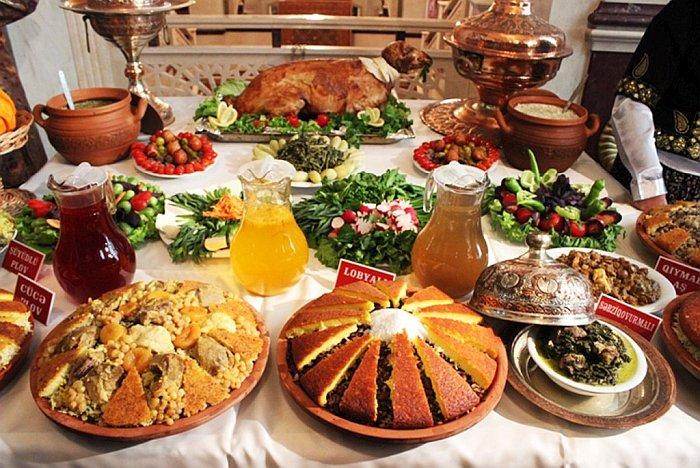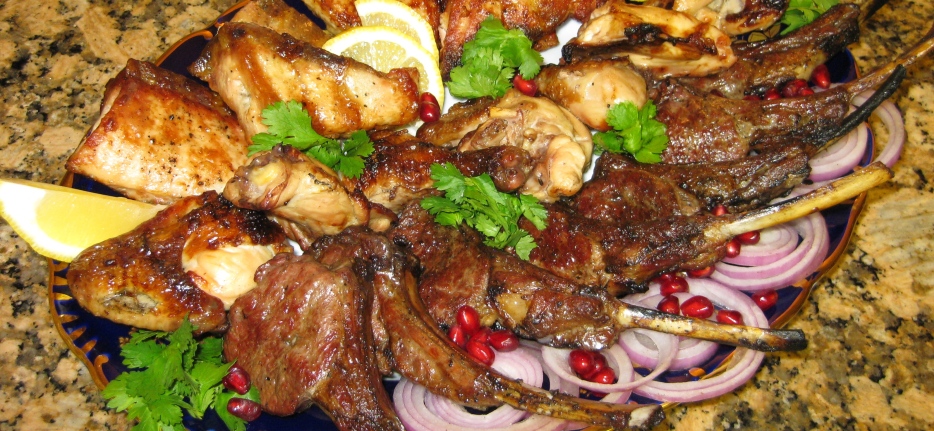Azerbaijani Cuisine
Azerbaijani cuisine, a rich tapestry of flavors and culinary traditions, is a reflection of the country’s diverse history and geographical influences. Situated at the crossroads of Europe and Asia, Azerbaijan has absorbed culinary influences from its neighbors, resulting in a unique and delectable cuisine.
Key Characteristics:
- Abundance of Fresh Produce: Azerbaijan’s fertile lands provide an abundance of fresh fruits, vegetables, and herbs, which are prominently featured in Azerbaijani cuisine. Eggplants, tomatoes, bell peppers, spinach, cabbage, onions, sorrel, beets, radishes, cucumbers, and green beans are commonly used ingredients.
- Rice as a Staple: Rice is a staple food in Azerbaijani cuisine, often prepared with saffron and various herbs and greens. Plov, a saffron-infused rice dish, is considered the national dish and is served with a variety of accompaniments.
- Meat Dishes: Meat plays a significant role in Azerbaijani cuisine, with lamb, beef, chicken, duck, and fish being popular choices. Kebabs and shashlik (skewered meat) are particularly favored, often grilled over charcoal and seasoned with aromatic spices.
- Stuffed Grape Leaves and Vegetables: Dolma, the art of stuffing grape leaves and vegetables, is a culinary gem of Azerbaijan. Various fillings, such as ground meat, rice, herbs, and spices, are used to create these delicate and flavorful dishes.
- Bread and Flour Products: Bread is an essential part of Azerbaijani meals, typically served fresh from traditional tandoor ovens. Flour products like khinkali (dumplings) and qutab (stuffed flatbreads) are also popular and add variety to the culinary landscape.
- Sweets and Desserts: Azerbaijani cuisine boasts a delightful array of sweets and desserts, often incorporating nuts, dried fruits, and honey. Shekerbura, a flaky pastry filled with nuts, and paklava, layered with phyllo dough, nuts, and honey, are among the most beloved treats.
Regional Variations:
Azerbaijani cuisine exhibits regional variations, reflecting the diverse cultural influences within the country. For instance, Sheki, a city renowned for its silk production, is known for its distinctive plov recipe, while Lankaran, a coastal town, features seafood specialties.
Dining Etiquette:
Traditional Azerbaijani dining etiquette emphasizes hospitality and sharing. Meals are typically served family-style, with an abundance of dishes placed on the table for everyone to enjoy. Elders are often respected and served first.
Beverages:
Ayran, a refreshing yogurt-based drink, is a popular accompaniment to Azerbaijani meals. Black tea is widely consumed throughout the day, often served with lemon or sugar. Azerbaijani wines, produced from grapes grown in various regions, are also gaining recognition for their quality and unique flavors.
Overall, Azerbaijani cuisine is a captivating blend of flavors, traditions, and regional influences. It offers a culinary journey that tantalizes the taste buds and reflects the rich cultural heritage of Azerbaijan.

